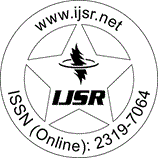Downloads: 1
India | Physiotherapy | Volume 14 Issue 10, October 2025 | Pages: 98 - 101
Exploring Physiotherapy Strategies for Managing Neurological Deficits in a Hypertrophic Pachymeningitis Patient: A Case Study
Abstract: Introduction: Pachymeningitis is a fibrosing and inflammatory process, which involves the dura mater. Some pachymeningitis are cranial and induce headaches and cranial nerve palsies. The cavernous sinus is a critical anatomical structure that houses important nerves, including the oculomotor, trochlear, and abducens nerves, as well as the trigeminal nerve. This case study aims to investigate the effectiveness of physiotherapy strategies in managing the neurological deficits associated with pachymeningitis and cavernous sinus involvement. Objectives: The primary objective of this case study is to evaluate the effectiveness of saccade and pursuit training along with TENS and Masticatory muscle training to subside the symptoms in a patient who developed diplopia and right facial numbness and pain following pachymeningitis with cavernous sinus involvement. Methodology: A single case study was conducted with a 35-year-old female patient who developed diplopia and right facial numbness and pain following pachymeningitis with cavernous sinus involvement. The patient received saccade and pursuit training along with TENS and Masticatory muscle training with treatments administered three times a week for 6 weeks. Clinical assessments, including the Ocular Motor Nerve Palsy Scale (OMNPS), Modified Medical Research Council scale (MRCS), Diplopia Questionnaire (DQ) were performed before, during, and after the treatment period. Results: Post intervention assessments showed high significant improvements in pain reduction and significant improvement in motor function. Conclusion: This case study highlights the potential benefits of physiotherapy in managing neurological deficits associated with pachymeningitis with cavernous sinus involvement. The findings suggest that a personalized physiotherapy approach can lead to meaningful improvements in motor function, pain management. Further studies with larger sample sizes are needed to validate these findings and refine rehabilitation strategies for pachymeningitis patients.
Keywords: Pachymeningitis, Cavernous Sinus, TENS, OMNPS, Modified MRCS, DQ
How to Cite?: Shubham Vinay Gajare, Dr Shyam Kurapati, "Exploring Physiotherapy Strategies for Managing Neurological Deficits in a Hypertrophic Pachymeningitis Patient: A Case Study", Volume 14 Issue 10, October 2025, International Journal of Science and Research (IJSR), Pages: 98-101, https://www.ijsr.net/getabstract.php?paperid=SR25930110715, DOI: https://dx.doi.org/10.21275/SR25930110715
